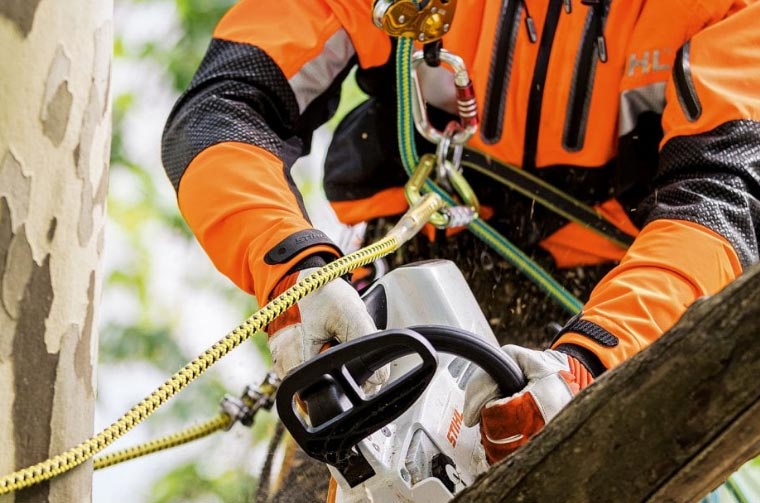Safe chainsaw handling is all about having the right tool for the job, knowing how to use and handle the device correctly, and taking all necessary precautions. It’s also essential that you wear the correct safety gear for operating a chainsaw. You want to avoid contact with the saw blade, but you also need to be prepared for the worst – these things can and do happen and skimping on protective equipment can be a lethal decision.
Know Your Chainsaw
Knowing your chainsaw’s safety features is critical. There are four in the back of the engine. The right-hand guard helps to protect your hands if the chain breaks off and begins to swing. The dead man’s trigger means you can’t press the throttle unless the trigger is also pressed simultaneously. Not to mention the on-off switch. In the middle of the engine, you have the anti-vibration mount. This handle is attached to a spring-loaded mount to help reduce vibrations. This prevents your hand from going numb during use which can result in a loss of control. The chain brake is another vital safety feature, and a chain catcher also help prevent a broken chain from causing you an injury. The exhaust in a Stihl Chainsaw points forwards and away from your body. This prevents hazards such as choking and reduced visibility. The chain’s teeth should be the correct height. If they’re too large, there’s a greater risk of kickback, resulting in a loss of control.
Safe Chainsaw Handling: Understanding Kickbacks
A kickback happens when the bar’s tip hits a solid object, which causes the saw to come back up towards you. The faster the chain is moving, the greater the kickback. You can avoid kickback by ensuring you have a firm grip that’s secure in the event of a kickback. Keep one hand on the top handlebar with your thumb wrapped under the bar. Try to stand to the side of the vertical path of the saw so that if there is a kickback you are not directly in harm’s way. It’s essential to know where the tip of the bar is. If shifting wood closes or pinches the chain, you’re at risk of a kickback, so be aware of hazards like falling or moving wood. Consider where the wood will go before you start cutting.
Another common cause of kickbacks is hidden material near or behind where you cut. For example a steel bar inside a wooden post. To prevent this from occurring, try to check behind and around the cutting area for hazards.
